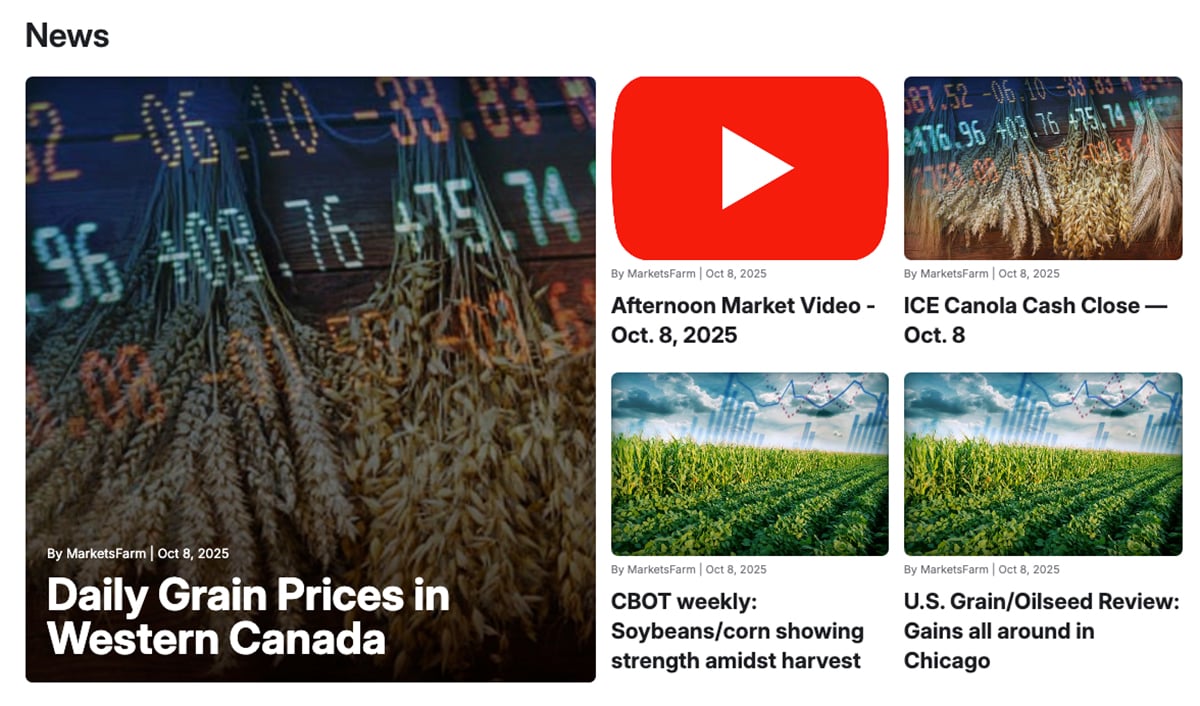Rumours that China has begun buying new-crop Canadian canola have cheered canola traders and should help farmers get better basis levels, analysts say.
Chinese buying is a major factor that could help canola growers stay ahead of a possible slump in overall vegetable oil prices.
“It would be tremendous if China came back into our marketplace,” said farm marketing adviser Errol Anderson.
“It’ll support the futures, give us a premium over soybean oil and improve the basis levels locally, so the growers will get kind of a double whammy.”
Read Also

VIDEO: Catch up with the Western Producer Markets Desk
The Western Producer Markets Desk provides daily updates on agricultural markets, with recent video commentary including looks into canola, wheat, cattle and feed grains.
Commodity trader David Reimann of Benson Quinn GMS said Chinese buying has not been confirmed, but action in the canola pit has made everyone suspicious that China is back in the market.
“We’ve seen enough buying in here that certainly someone has done some sizable business,” said Reimann.
China can be a big buyer of Canadian canola, consuming hundreds of thousands of tonnes in good years. But last year’s high prices after harvest cut off Chinese demand, part of the rationing-by-price phenomenon that caused buyers to flee, prices to fall and stocks to build.
Chinese demand is price sensitive, meaning it disappears when canola’s price grows too rich compared to other vegetable oils.
The return of Chinese demand depends on lower canola prices this fall, which isn’t good for farmers hoping for high canola prices again. But Anderson said a lower commodity price will be partially mitigated by better basis levels if China starts buying boatloads of canola.
“It’ll be like 10 days of flurry buying” by the grain companies, said Anderson.
The grain companies will shrink their basis levels to quickly attract enough canola from growers. As they hedge their purchases in the futures market, the canola price will briefly move up as well.
“Spot premiums will appear if China comes back,” said Anderson.
“But when the sale is completed, the market will tend to slump back.”
Anderson said farmers need to jump on canola price surges and good basis offers to take advantage of new Chinese demand. Farmers should let grain companies know they are willing to sell if they get a good offer.
“The grower has to be a bit of a salesman,” said Anderson.
“The guys that say ‘yes’ on the first load will get the next call,” said Anderson.
“Don’t cry wolf on them. You have to be willing to do something, even if it’s only one truckload.”
Anderson said farmers need to prepare for poor vegetable oil prices for the coming year. Big U.S. and South American soybean crops, if they occur, would depress the trend-setting soybean price.
Canola growers should consider opportunities this fall and winter, because while canola’s outlook isn’t that bad, the vegetable oil complex won’t help it, Anderson said.
And there is still the chance that a string of bad luck could drag the November canola futures contract price below $300 per tonne.
“If the Canadian dollar goes up to 75 cents and China doesn’t come to the market and soybeans fall below five bucks (per bushel on the Chicago futures contract), it’s going to be pretty bad,” said Anderson.
If the canola price did slump that low, it would probably rebound during the winter, he said.















